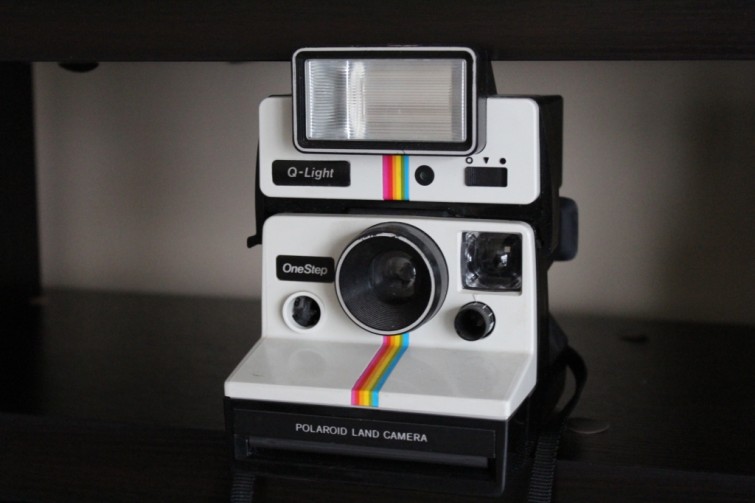This is it: the iconic Polariod OneStep. That classic rainbow stripe. That stubby matching flash attachment. That bright white flash that makes all the hipsters wet themselves. The Polariod OneStep is the real deal.
For those unfamiliar with this type of camera, Land Cameras are instant cameras with self-developing film named after their inventor, Edwin Land, and manufactured by Polaroid from 1947 to 1983. The first commercially available model was the Polaroid Land Camera Model 95, which produced prints in about one minute, and was first sold to the public in 1948.
The Polaroid OneStep pictured above, like all Polaroid Land Cameras, uses SX-70 type Polaroid film, which was popular in the 1970s and 80s. So if you’re wanting to produce some pictures from the camera, The Impossible Project offers eight-packs of brand new film for SX-70 cameras about $24.
Despite its classic design, it only has the most basic of functions. Perhaps inspiring the name of this camera, you take pictures in one step with no need to turn the gadget on. And there is no ability to focus, so taking pictures that hone in on your desired subject can be difficult without practice.
Just below the eye piece is the exposure compensation dial, which is on every Polaroid camera that I’ve come across. Turn it towards the white side to make your photo lighter, and towards the dark side to make it darker. Simple enough.
On the opposite side is where the shutter button is supposed to be. So unfortunately, my OneStep camera is useless on the functional side. If the button was attached and pressed, a series of mechanical functions would activate:
The shutter closes. The fresnel-mirror is unlatched and springs up in front of the viewing-mirror. On its back is the taking-mirror, which reflects light from the lens to the film. The electric eye in the front of the camera measures the light and sets aperture and opens the shutter according to the calculated values. The exposed picture is ejected through a pair of rollers that break a pod with chemicals that start development. Mirrors flip back to idle position.
Powered by alkaline batteries, the Q-Light attachment was sold separately. Mine, fortunately, came with one already attached. Unlike the camera itself, the Q-Light has an on-off switch, and it’s recommended that users turn it off whenever it’s not being used. The range is four to nine feet, which is pretty standard for other flashes of its time.
All in all, this piece is one of my favorites in my instant camera collection. If you’re looking for a sturdy, reliable camera that takes crisp, clear photos, this OneStep definitely isn’t for you. But if you have an appreciation for vintage gadgets and you’re looking for a nice bookend or paper weight with a classic design, look no further.
Sources: camerapedia.wikia.com. For more information about decorating with vintage cameras, check out my piece on incorporating vintage cameras into a modern living space. To check out other features on vintage cameras, click here.


Pingback: Thrift pick: Polariod Pronto Land Camera | Retro Chronicle